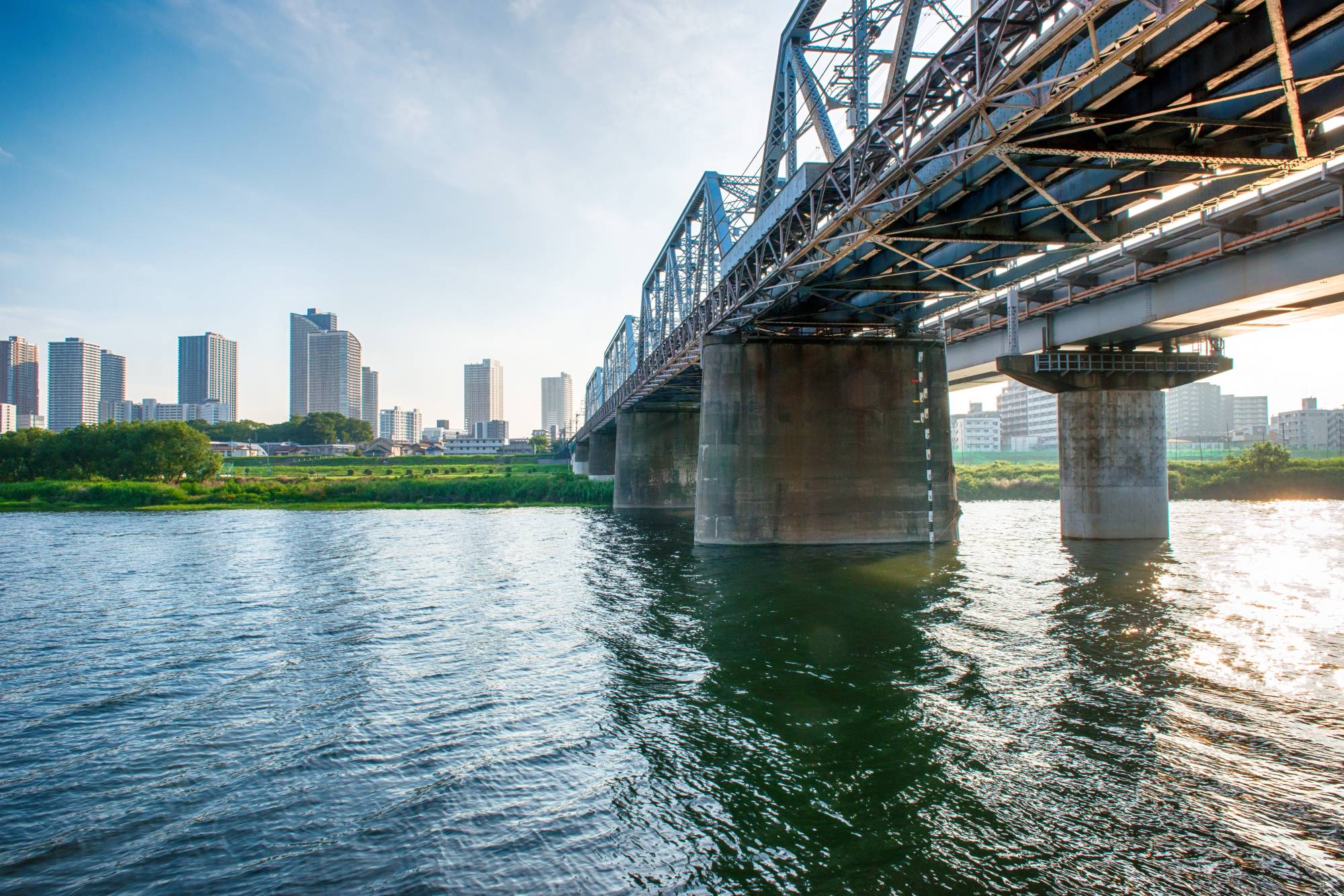It’s a sunny Sunday afternoon along the Tama River in Tokyo’s Ota Ward, and the riverbank is crowded with people enjoying the weather. Parents and children cycle side by side, rowdy baseball teams are finishing off matches and fishermen wade out to the shallows hoping for a decent catch.
The river forms the capital’s boundary with Kanagawa Prefecture and shapes the landscape for nearly 140 kilometers from its source at Mount Kasatori in Koshu, Yamanashi Prefecture. From here, the river runs through the mountains of western Tokyo, forming Lake Okutama at Ogochi Dam, traveling east through Chichibu-Tama-Kai National Park before making its way southeast between Tama Hills and Musashino Terrace.
In Ota Ward, where shinkansen and commuter trains constantly rattle across bridges overhead, sitting on the water’s edge reveals something else about this winding waterway: a layer of litter hiding in plain sight. Food packets, coffee cups and plastic bottles bob on the surface of the water, occasionally clinging to the branches of overhanging trees.

















With your current subscription plan you can comment on stories. However, before writing your first comment, please create a display name in the Profile section of your subscriber account page.